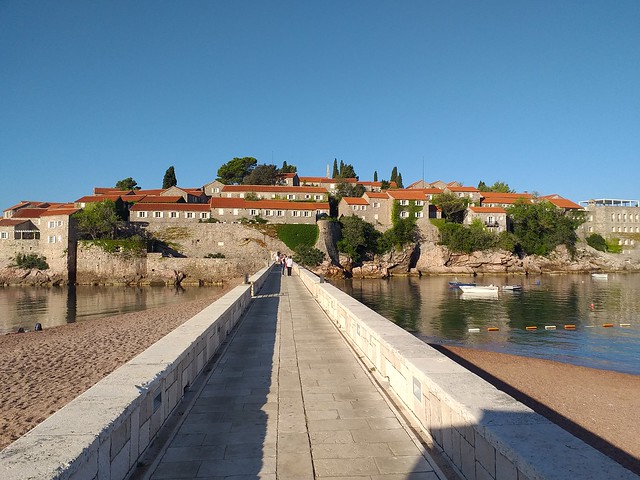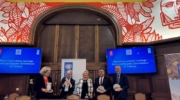European experts’ report highlights the urgent need to protect the Cultural Landscape of Sveti Stefan in Montenegro from overdevelopment
In a technical report released today, experts from Europa Nostra and the European Investment Bank Institute emphasise the urgent need to protect the Cultural Landscape of Sveti Stefan in Montenegro from overdevelopment. Sveti Stefan was listed among the 7 Most Endangered heritage sites in Europe for 2023.
Sveti Stefan, with Miločer Park, is a cultural heritage site of unprecedented beauty; it is often considered the symbolic image of Montenegro. Sveti Stefan is a 15th-century fortified town, built as the cultural and administrative heart of the Paštrovići region. The 1.2-hectare islet, with its stone houses, four churches, streets, lanes, squares and gardens, is connected by a low bridge to the mainland in close proximity to Miločer Park. The park includes a 1930s summer residence of a Yugoslav royal family, including several buildings, two beautiful beaches, a 19th-century French bridge, and a botanical garden landscaped in the French classical style.
Despite Sveti Stefan’s national cultural heritage status, recent years have seen the privatisation of this national treasure, effectively disenfranchising citizens from their own public domain and heritage. A 2007 lease contract between the Government and a multinational development company has resulted in several unauthorised modifications, including the construction of a large-scale condo-hotel within Miločer Park, compromising the site’s cultural and natural integrity.
The popular public summer theatre has been closed and dismantled, and public access to the site and waterfront has been severely restricted, preventing locals and non-hotel guest tourists from enjoying this cherished cultural landscape. These actions have sparked significant concern over the future of these historic sites.
The experts’ report emphasises the urgent need for action to protect Sveti Stefan and Miločer Park from further degradation. It calls for an immediate halt to unauthorised developments that compromise the cultural and natural value of these heritage sites. The report also stresses the importance of restoring public access, ensuring that both locals and tourists can once again enjoy these cherished cultural landscapes.
To safeguard the sites for future generations, the report advocates for the implementation of stringent measures under national and international heritage laws. Additionally, it highlights the necessity of improving site management and allocating adequate resources to preserve the cultural and natural integrity of Sveti Stefan and Miločer Park.
The report was compiled by Lourdes Llorens, Economist and Planner provided by the European Investment Bank Institute, and two members of the Advisory Panel of the 7 Most Endangered Programme: Dr. Višnja Kisić, Academic, Art Historian and Heritage Management Specialist, and Laurie Neale, Architect, Heritage Assessment Expert, and Artist.
The report was formulated on the basis of the outcomes of the mission in Montenegro undertaken by experts from Europa Nostra and the European Investment Bank Institute between 20 to 25 February 2024.
Related news
Europa Nostra and EIB Institute experts implement mission to Sveti Stefan in Montenegro
Secretary General of Europa Nostra and President of Montenegro discuss ways to save endangered sites of Sveti Stefan, Miločer Park and Bay of Kotor








